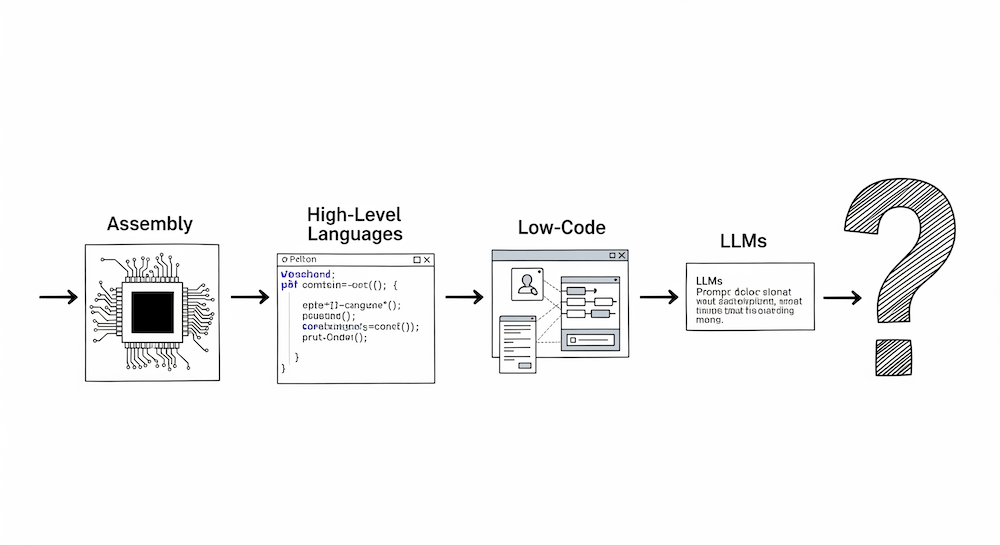
The Evolution of Creation: From Code to Prompts
The story of IT technology is a story of abstraction.
03 July 2025
From the first stone tools to the microchip, our progress has been defined by our ability to build more powerful tools that hide underlying complexity. Software development is no different.
Let's trace this evolution:
1. The Age of the Artisan (e.g., Assembly):
In the beginning, programmers were like master craftspeople, working directly with the "metal" of the machine. They manipulated memory registers and processor instructions by hand. The control was absolute, but the process was painstakingly slow, complex, and accessible only to a select few. Every creation was a unique, artisanal masterpiece.
2. The Age of the Factory (e.g., Python, Java):
High-level languages and frameworks brought us the industrial revolution of software. We moved from crafting individual components to assembling them on a production line. This new level of abstraction allowed us to build larger, more complex systems faster than ever before. We could think in terms of objects and functions, not just memory addresses.
3. The Age of Prefabrication (Low-Code/No-Code):
The next leap was Low-Code/No-Code platforms. This was like moving from a factory to building with pre-fabricated modules. Suddenly, people without deep coding knowledge could assemble functional applications by dragging and dropping components. Creation was democratized, but it came with a trade-off: you could only build what the platform allowed. The walls of the pre-fabricated house were solid.
4. The Age of the Genie (LLMs):
Today, we are in the age of the magical genie. We can simply state our wish in a text prompt—"Build me a website for a pet-sitting business"—and the LLM grants it, generating code in seconds. The power is breathtaking. Yet, we've also discovered the genie's nature: it's a brilliant but forgetful improviser. It lacks deep context, has no persistent memory of the system it's building, and can create beautiful, yet subtly flawed or inconsistent results.
Each of these stages represents a monumental leap in our ability to create. But each has also revealed a new layer of limitations—from the complexity of the artisan, to the rigidity of the factory, to the contextual blindness of the genie.
𝗪𝗲 𝗮𝗿𝗲 𝗮𝘁 𝗮𝗻𝗼𝘁𝗵𝗲𝗿 𝗶𝗻𝗳𝗹𝗲𝗰𝘁𝗶𝗼𝗻 𝗽𝗼𝗶𝗻𝘁. The next step in this evolution requires a new paradigm—one that combines the structural integrity of earlier stages with the linguistic power of the new, all within a system that can understand, adapt, and evolve.
#SoftwareDevelopment #Programming #HistoryOfCode #LowCode #NoCode #LLM #Innovation #CognitoOne #dEO